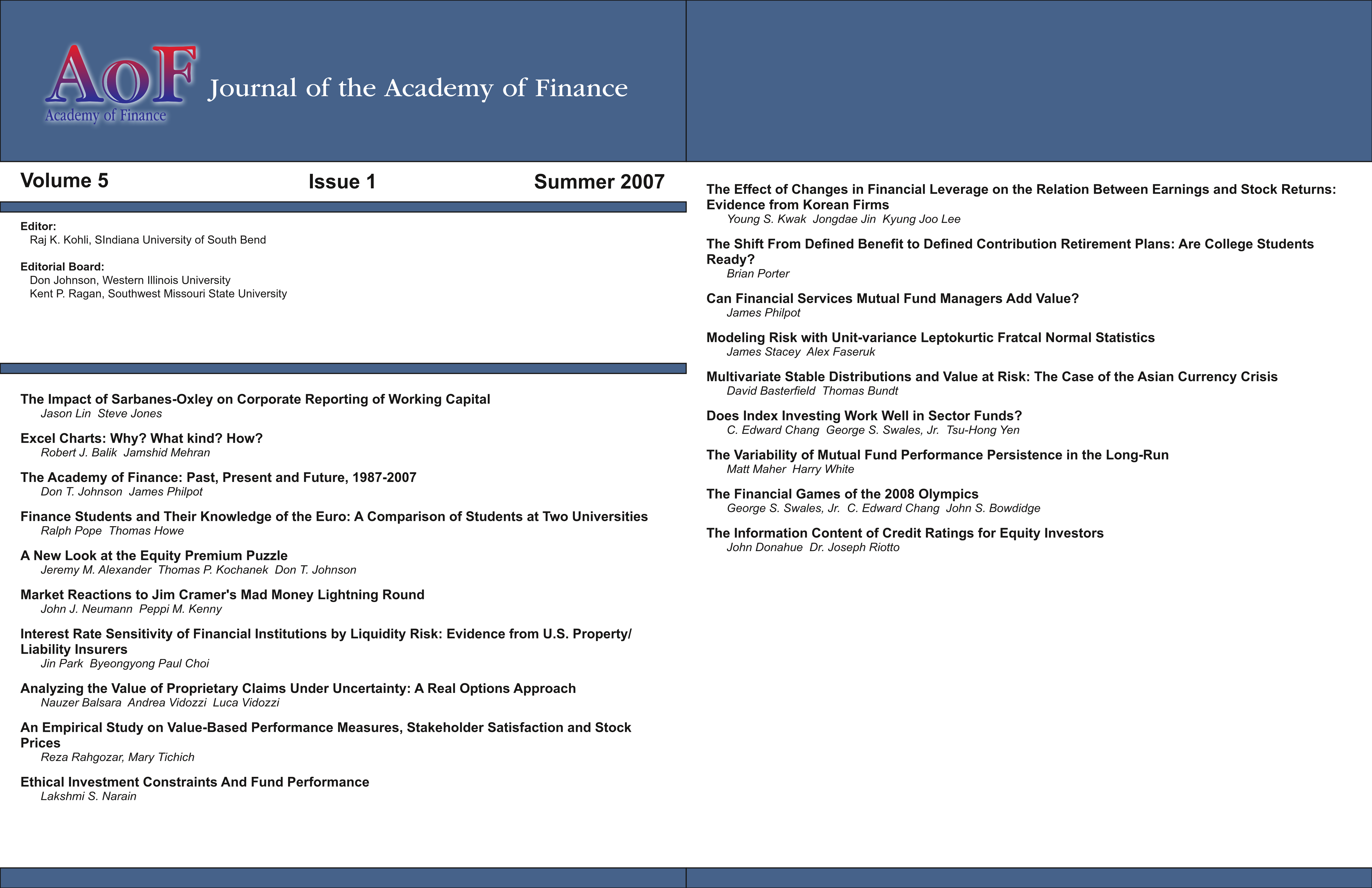The Shift From Defined Benefit to Defined Contribution Retirement Plans: Are College Students Ready?
DOI:
https://doi.org/10.58886/jfi.v5i1.2595Abstract
As defined contribution retirement plans, rather than defined benefit retirement plans, become the norm, it is imperative that people have a thorough understanding of retirement planning. From 1975 to 1998, there was an increase of 42 million Americans enrolled in non-Social Security retirement programs, from 44 million to 86 million. In 1975, the predominant plan was defined benefit with 32 million Americans participating in 103,000 different defined benefit plans. In contrast, 10 million Americans were participating in 208,000 different defined contribution plans. By 1998, the dominant plan had switched. Forty-six million Americans were in defined contribution plans and 40 million were in defined benefit plans (Migration News). The trend is clearly away from defined benefit plans and to defined contribution plans.
This study fills the gap that currently exists in this area and advances this body of knowledge in three important ways. One, it assesses the financial literacy of current college students in the specific area of retirement planning. Two, it compares three factors that may impact college students' knowledge in retirement planning: (1) taking a college course in finance with exposure to retirement planning, (2) gender, and (3) major. Three, it suggests methods for improving the retirement planning knowledge of college students. Results of this study indicate that college students are deficient in retirement planning knowledge and that even a short topical module on retirement planning included in an introductory finance course significantly improves students' retirement planning literacy.





